What does “NO SIGNAL” mean on my Panasonic SC-PM42DB Stereo System?
- SSteve WilliamsAug 27, 2025
If your Panasonic Stereo System displays “NO SIGNAL”, this station cannot be received. Check your antenna.
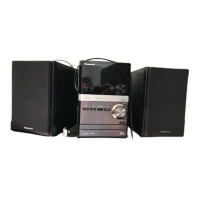
What does “NO SIGNAL” mean on my Panasonic SC-PM42DB Stereo System?
If your Panasonic Stereo System displays “NO SIGNAL”, this station cannot be received. Check your antenna.
What causes sound problems from Panasonic SC-PM42DB speakers?
If the sound from your Panasonic Stereo System sounds unfixed, reversed, or is only coming from one speaker, check the speaker connections.
How to fix no sound on Panasonic Stereo System?
If there is no sound from your Panasonic Stereo System, first, ensure the volume is turned up. If the issue persists, the speaker cords may not be properly connected. Turn the unit off, check, and correct the connections, then turn the unit back on.
| Type | Micro System |
|---|---|
| Power Output | 40 W |
| Speaker Configuration | 2.0 |
| Radio Tuner | Yes |
| USB Port | Yes |
| CD Player | Yes |
| Connectivity | Bluetooth, AUX In |
| Playable Media | CD, MP3 |
| Speakers | 2 Speakers |
Lists all items included with the CD Stereo System.
Identifies the SC-PM38DB and SC-PM42DB CD Stereo System models.
Details how to safely replace the fuse in the AC mains plug.
Provides contact details for customer care and sales support.
Advises on speaker positioning, ventilation, and safe usage to prevent damage.
Provides instructions for disposing of old equipment and explains battery symbols.
Step-by-step instructions for connecting speaker cables to the main unit.
Guide on connecting FM, DAB antennas, and the AC mains lead.
Information on connecting optional FM and DAB outdoor antennas for improved reception.
Instructions for installing batteries and basic remote control operation.
How to activate or deactivate the unit's demonstration mode.
Identifies and describes the buttons, display, and ports on the main unit.
Details the headphone jack and speaker connection points on the main unit.
Explains the various buttons on the remote control and their functions.
Step-by-step guide for playing audio CDs and MP3 discs.
Explains different playback modes available for discs like 1-TRACK, RANDOM.
How to view track, folder, and artist/album information for discs.
Details how to repeat tracks/discs and create custom playlists.
Covers manual/automatic tuning and storing FM radio stations.
Explains DAB bands, frequencies, and ensemble/station terminology.
How the unit scans and memorizes DAB stations, and selects them.
Managing station memory, including updates and handling 'NO SERVICE'.
How to preset and select DAB channels for quick access.
Explains how to display dynamic labels, PTY, ensemble, frequency, and time.
Features for automatic clock adjustment and checking DAB signal quality.
How to change the auto scan mode between 'United Kingdom' and 'ALL BAND III'.
Instructions for setting and viewing the 24-hour clock.
Guide to setting a timer to automatically turn on the unit and play music.
How to set the unit to turn off automatically after a specified time.
How to select sound profiles and manually adjust bass/treble levels.
Explains how to activate surround sound and D.BASS for enhanced audio.
Details the re-master feature for improving sound quality of MP3 and iPod sources.
Guide to inserting, connecting, charging, and playing an iPod using the built-in dock.
How to play, pause, skip tracks, and navigate iPod menus.
Instructions for connecting USB devices and playing MP3 files, including compatibility.
How to change and match the remote control codes with the main unit.
Solutions for when there is no sound or audio is distorted or unbalanced.
Explains common error messages and display indicators like 'ERROR'.
Resolving radio noise, TV interference, and improving reception.
Solutions for iPod not turning on, charging, or USB read errors.
Fixes for poor DAB reception, scrambled signals, and station memory issues.
Details power output, frequency ranges, impedance, and dimensions for unit components.
Instructions for cleaning the exterior of the unit with a soft cloth.
Guidelines for safe unit placement, ventilation, and handling AC power.
Advice on foreign objects, service, laser use, fire hazards, and climate.
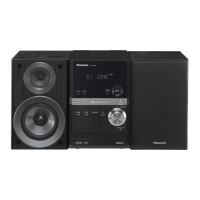



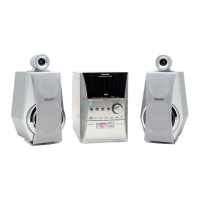

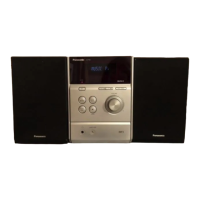
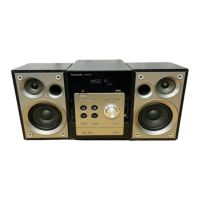
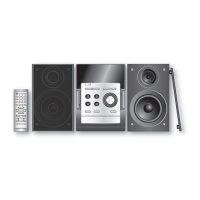
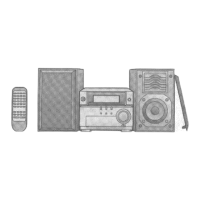
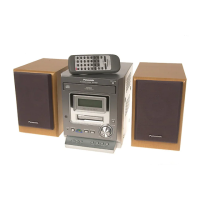
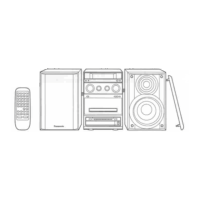
